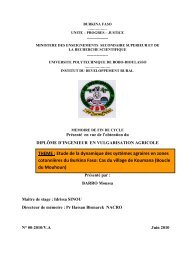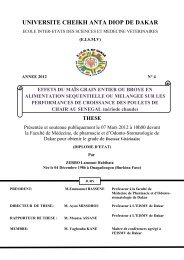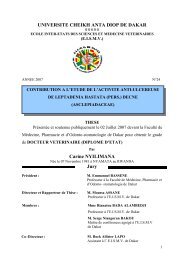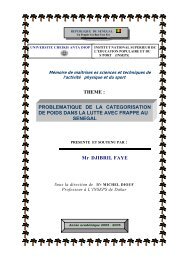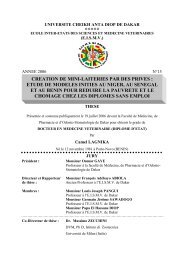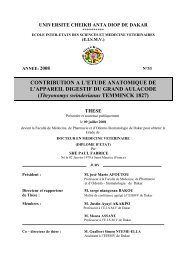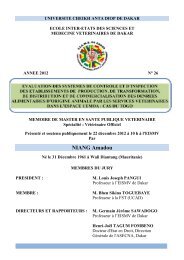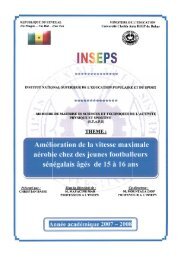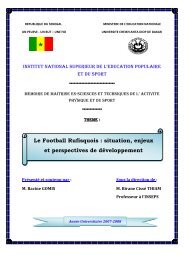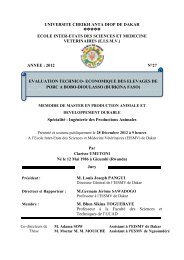Les surdités acquises chez le chien et les moyens de ... - BEEP
Les surdités acquises chez le chien et les moyens de ... - BEEP
Les surdités acquises chez le chien et les moyens de ... - BEEP
Create successful ePaper yourself
Turn your PDF publications into a flip-book with our unique Google optimized e-Paper software.
1.3.Rô<strong>le</strong> <strong>de</strong> la membrane tympanique ............................................................ 24<br />
2. La cavité tympanique .................................................................................... 25<br />
3. La chaîne ossiculaire ..................................................................................... 26<br />
3.1.Conformation <strong>de</strong>s osse<strong>le</strong>ts <strong>de</strong> l’oreil<strong>le</strong> moyenne ...................................... 26<br />
3.2.Moyens d’unions <strong>de</strong>s osse<strong>le</strong>ts auditifs <strong>et</strong> <strong>le</strong>ur musculature .................... 28<br />
3.3.Fonction <strong>de</strong> la chaîne ossiculaire .............................................................. 29<br />
4. La trompe auditive ........................................................................................ 30<br />
4.1.Caractéristiques <strong>de</strong> la trompe auditive .................................................... 30<br />
4.2.Rô<strong>le</strong> <strong>de</strong> la trompe auditive ........................................................................ 32<br />
C. L’OREILLE INTERNE ................................................................................... 32<br />
1. Appareil cochléaire <strong>et</strong> audition .................................................................... 33<br />
1.1.Anatomie <strong>de</strong> la cochlée .............................................................................. 33<br />
1.2.Fonction <strong>de</strong> la cochlée ................................................................................ 40<br />
2. Appareil vestibulaire <strong>et</strong> équilibration ......................................................... 43<br />
D. LES VOIES NERVEUSES DE L’AUDITION .............................................. 43<br />
DEUXIEME PARTIE : LES DIFFERENTS TYPES DE SURDITES ACQUISES<br />
CHEZ LE CHIEN ....................................................................................................... 46<br />
I. CLASSIFICATION DES SURDITES ............................................................... 47<br />
1. Classification en fonction du déterminisme <strong>et</strong> <strong>de</strong> l’âge d’apparition <strong>de</strong> la<br />
surdité……………………………………………………………………………47<br />
2. Classification en fonction <strong>de</strong> l’origine <strong>de</strong> la surdité ................................... 48<br />
2.1.<strong>Les</strong> <strong>surdités</strong> centra<strong>le</strong>s <strong>chez</strong> <strong>le</strong> <strong>chien</strong> .......................................................... 48<br />
2.2.<strong>Les</strong> <strong>surdités</strong> périphériques <strong>chez</strong> <strong>le</strong> <strong>chien</strong> .................................................. 48<br />
3. Classification en fonction <strong>de</strong> l’étage anatomo-fonctionnel atteint ............ 49<br />
II. LES CAUSES LIEES A L’APPARITION DES SURDITES DE<br />
TRANSMISSION ........................................................................................................ 51<br />
1. Pathologie empêchant la conversion mécanique <strong>de</strong> l’on<strong>de</strong> sonore ........... 51<br />
xxv



